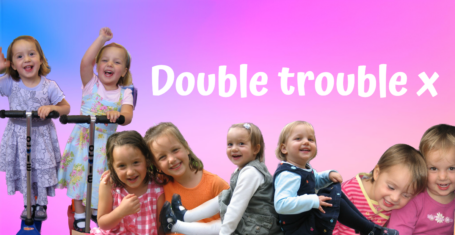
Do You Like Scary Movies?
Halloween is upon us! Spines are waiting to be tingled. Hairs are waiting to be raised. Large vegetables are being decoratively carved. Taking into consideration ingenuity, wit and intelligence as well as the pant-shitingly horrible, here are five of the very best scenes ever to grace the scary screen. *beware of mild spoilers*
1. The Texas Chainsaw Massacre – Dinner party

I say ‘mild spoilers’ because it’s probably no great surprise to anybody that, in ‘The Texas Chainsaw Massacre’, some people are massacred with a chainsaw in Texas. It’s a hell of a title – so factual, so simple, that it leaves you entirely unprepared for the entire lack of logic which is the unstable engine of the movie. It’s a title that gives away everything and nothing. Counter-intuitively, Tobe Hooper’s 1974 masterpiece contains very little blood, rendering it almost impossible for censors to cut. When survivor Sally is treated to dinner by Leatherface and his family, the very tip of her finger is sliced open, in order for the half-dead ‘Grandpa’ to suckle. This one small flash of red is so much more horrific because of its brevity, and because it comes amid a dearth of face-on gore. Hooper famously once commented that ‘The Texas Chainsaw Massacre’ is ‘a bad day for everyone…including Leatherface’. The dinner scene shows that to the Sawyer family, it is Sally, not them, who causes the problem.
2. The Night of the Hunter – ‘Leaning on the everlasting arms’
Some would dispute the idea that Charles Laughton’s 1955 ‘The Night of the Hunter’ is a Horror film at all – its reputation is more firmly cemented in the Film Noir camp – but its incredible creepiness more than warrants its inclusion in the genre. This, the only film Laughton ever directed, is a fairytale at heart, a simple story about a wicked reverend hunting down two children for the stolen fortune they inherited from their father. Robert Mitchum’s eponymous ‘hunter’ is one of the most unsettling villains ever committed to screen, and his rendition of ‘Leaning on the everlasting arms’, in the film’s most haunting scene, feels like icy water dripping down your back. Having escaped by river from their mother’s murderer, and taken refuge in a farmhouse, the children seem momentarily safe. And then Mitchum’s song seeps into earshot as he trots on horseback across the horizon, carved in silhouette. ‘Don’t he ever sleep?’ the boy asks. This film is black-and-white in a way that most black-and-white films are not: its blacks are like oil, its whites are like snow, and there is nothing in-between. It’s exactly how nightmares feel when you’re a kid.
3. The Wicker Man – The bit with the Wicker Man…
Most great Horror films are about subtext, about hell beneath the surface. ‘The Wicker Man’, however, is about the Horror of a society that does not supress its desires. It drops a chaste, straight-faced Brit on to Summerisle, a place where phallic symbols are worshipped in schools by day, and locals rut on the village green by night. The oft-cited designation of ‘The Wicker Man’ as ‘the Citizen Kane of Horror movies’ doesn’t quite stand up given how rough-round-the-edges it is. And yet the final scene endures as one of the greatest in all of Horror. The broken puritan is trapped inside a gigantic wicker man and engulfed in flame, his bellowed prayers smothered by the screams of roasting animals, and the arm-swinging islanders’ bizarre rendition of ‘Sumer is a-Comin’ In’. A nightmarish realisation of the potential dangers of English Folk music.
4. Night of the Living Dead – Ben’s death
The impact of George A Romero’s ‘Night of the Living Dead’ on pop culture is astonishing. As the father of modern zombie films, Romero arguably built the genre single-handedly. The zombies themselves are introduced as a ready-made cultural symbol that has scarcely been tampered with since. And yet, as well as the enduring figure it launched, it is an extremely timely film, a bravura example of Horror as contemporary social satire. Romero’s zombies are a symbol of a country eating itself, bound by violence. The casting of Duane Jones, a black actor, in the main role was something of a statement, as becomes clear in the final scene. Our hero Ben, the lone survivor of his group, meets his end, not at the hands of zombies, but with a bullet to the head from a gang of rangers who mistakenly think him undead. Coming only a few months after the assassination of Martin Luther King Jr., it is as bleak and striking an end as any. The credits roll to the sound of helicopter blades beating, and to grainy images of Ben’s body thrown on the fire, hideously reminiscent of the photography that was then emerging from Vietnam. A perfectly cynical set-up for a sequel, with a good claim to be the greatest Horror movie of them all…
5. Dawn of the Dead – ‘This was an important place in their lives’
Yes, a decade later Romero revisited the apocalypse with ‘Dawn of the Dead’, his satirical scalpel this time wedged firmly in the gut of consumerism. It’s difficult to isolate moments of greatness in a film that brims with them, but the survivors’ helicopter flight, culminating with their arrival at the shopping mall in which the bulk of the film is set, is something special. The aerial shots of zombies lumbering through fields give a desolate sense of scale, contrasted with a cheerily-scored montage of soldiers relaxing with beers as they gun down the undead. And then come the first shots of the mall, a ubiquitous sight suddenly made science-fictional – all clean white blocks and unnatural lighting. Zombies inhabit its aisles as if browsing. ‘What are they doing? Why did they come here?’, a survivor asks. The reply comes, ‘Some kind of instinct. A memory of what they used to do. This was an important place in their lives.’
There you have it, five of the greatest scenes of Horror seen on screen for your Halloween consumption. Because Cambridge students just aren’t tense enough as it is.









































